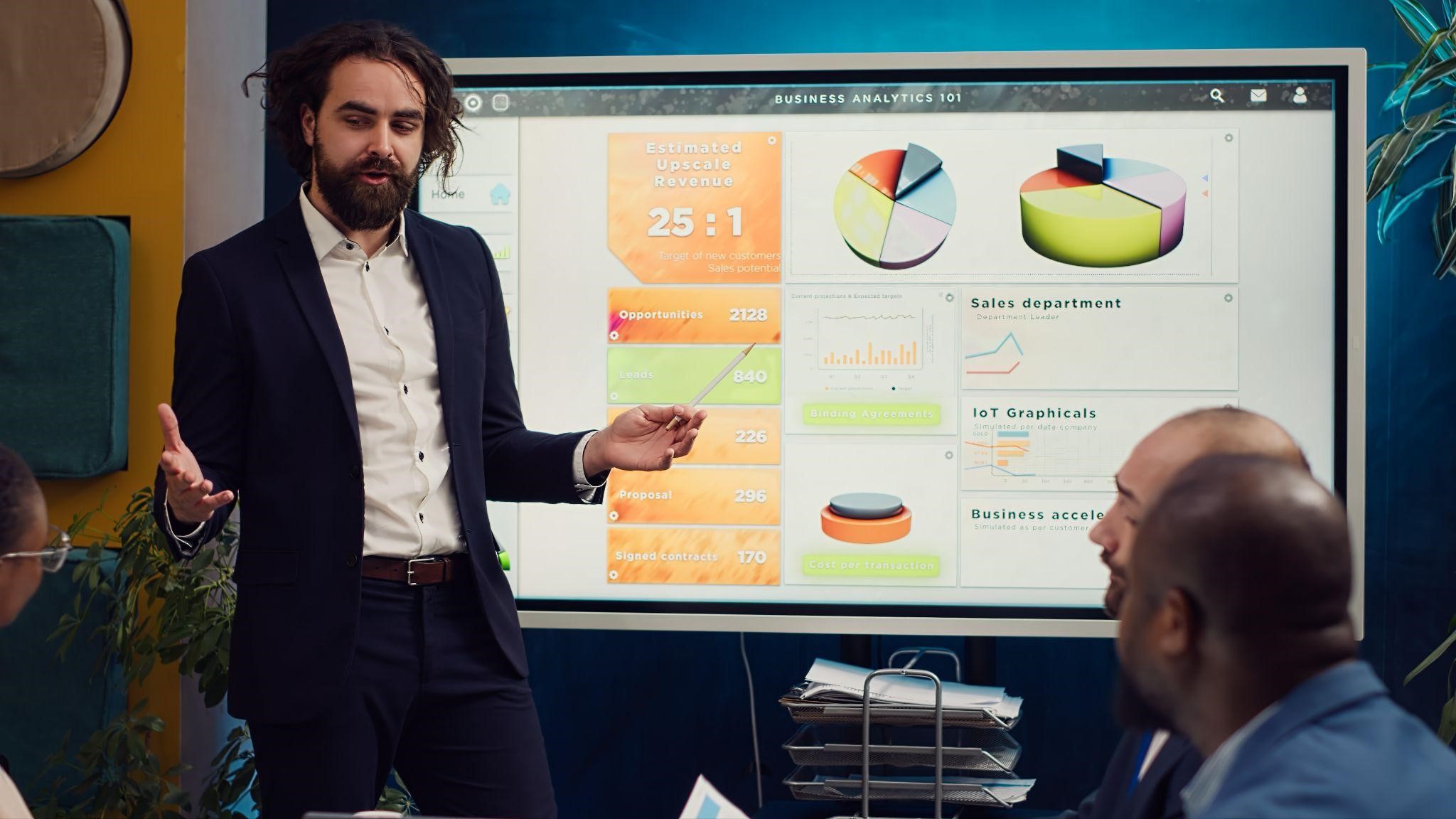Simple Ways to Make Your Slides Look More Professional
Making good slides is important if you want your presentation to have an effect. The way you design your slides can have a big impact on how people understand your message, whether you're pitching a business proposal, giving a lecture, or reporting on a project. In this article, we'll talk about easy ways to make your slides better and how using some tools can make the process easier without taking away from your content.
1. Choose a Clean and Consistent Design
A clean, basic design is the most important part of any professional presentation, especially if you’re creating slides for an online business or remote team meeting. Slides with too much text or too many things that draw the eye away from the main point can make people lose interest. Choose a simple style that maintains the attention on your message instead.
- Background: Pick a neutral, modest background that goes well with your content instead of fighting with it. This makes sure that your text and images are easy to see.
- Fonts: Use only one or two typefaces that are easy to read. Arial and Helvetica are good choices for digital presentations since they are crisp and easy to read.
- Consistency: Using the same colors, fonts, and layout on all of your slides gives your presentation a professional look and keeps the visual flow going.
For those looking to save time on design while ensuring quality, some platforms offer intelligent features that automatically suggest layouts, color schemes, and design elements tailored to your content. These tools analyze your text and images to recommend the most visually appealing combinations, helping to maintain a streamlined presentation from start to finish. For example, domypresentation.com provides solutions that adjust your slides' layout and overall aesthetic in real-time, making it easier to focus on your message rather than spending excessive time on formatting. This automation ensures your slides always look polished and professional, saving both time and effort.
2. Limit Text and Use Bullet Points
It can be simple to add too much text to your slides, but this can make your audience feel overwhelmed. Instead, use short bullet points to divide up the material into smaller, easier-to-understand pieces. There should be no more than six bullet points on each presentation, and each point should have no more than six words. This "6x6 rule" makes things easy and makes sure your audience can follow along.
This is a good method to make sure that your presentation is both quick and useful. Some applications may even automatically turn your text into clean, orderly bullet points, which can help you stay clear while you focus on your message.
3. Incorporate High-Quality Visuals
To keep your audience interested and make complicated content easier to understand, you need to use high-quality visuals like pictures, charts, and graphs. They can make data easier to understand and break up slides that are full of text.
It's crucial, nevertheless, to make sure that your graphics are clear and relevant. Bad pictures might make you look less credible and take away from the professionalism of your presentation. Tools that suggest relevant images can help you save time and make sure they fit with the style and tone of your material.
4. Use Consistent Transitions and Animations
Animations and transitions can make your presentation more interesting, but if you utilize them too much, they can take away from your content. Use basic, consistent transitions and animations that fit with the tone of your presentation as a whole.
Some presentation software may automatically include subtle animations and transitions, which is great for people who like to keep things simple. This way, you can have a polished look without having to do any manual work.

5. Utilize Professional Templates
Using professional templates might help you save time and keep your presentations looking the same. Templates frequently come with pre-set layouts, font options, and color schemes that make it easy to build excellent slides.
A lot of platforms include a lot of different templates for different kinds of presentations, such as business meetings, seminars, and creative pitches. Some providers can automatically change these templates to suit your content perfectly into the style you choose.
6. Optimize Slide Layouts for Readability
Good slide layout is critical for readability. Your presentations can be hard to follow if they have too much text or too many pictures. Make sure that your material is spaced out correctly and that there is enough white space so that each part of the slide is easy to read.
You may save time and make sure that your content is always shown in the clearest way by using platforms that automatically change layouts to make them easier to read. This feature typically makes your slides look better and makes them easier for your audience to understand.
7. Proofread and Edit
Typos or grammar mistakes can ruin even the best-designed slides. To keep your presentation professional, you need to proofread it carefully. Check your slides for mistakes multiple times, and if possible, have someone else review them.
Using AI-based grammar tools like grahmir.pro can help you detect and correct errors quickly, ensuring your presentation text is clear, accurate, and polished before you share it with your audience.
Final Thoughts
Making professional presentations doesn't have to be hard. You may make interesting and useful presentations by keeping the design simple, employing visuals intelligently, and using tools to make your slides better. Using tools that help automate design and content organization can save you a lot of time and work, whether you're starting from scratch or improving an existing deck.
You can give professional and powerful presentations if you follow these basic recommendations and use the resources that are available to you.